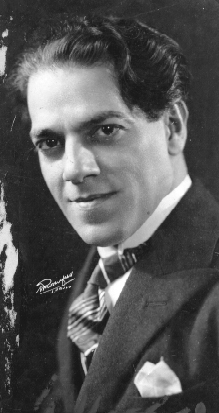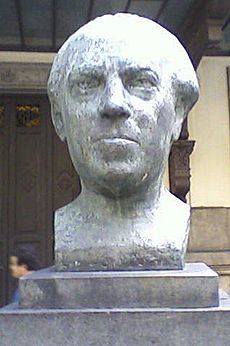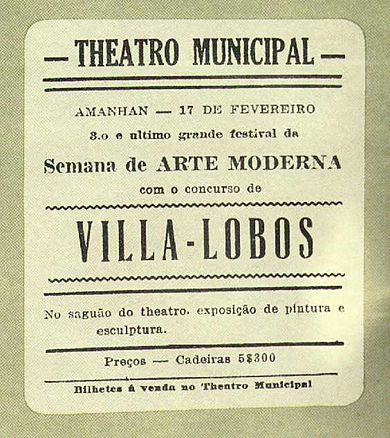Heitor Villa-Lobos facts for kids
Quick facts for kids
Heitor Villa-Lobos
|
|
|---|---|

Heitor Villa-Lobos, c. 1922
|
|
| Born |
Heitor Villa-Lobos
March 5, 1887 |
| Died | November 17, 1959 (aged 72) |
| Occupation | Composer |
Heitor Villa-Lobos (March 5, 1887 – November 17, 1959) was a famous Brazilian composer. He was also a conductor, cellist, and classical guitarist. Many people call him the most important creative person in 20th-century Brazilian music.
Villa-Lobos is known as the most famous South American composer ever. He wrote over 2,000 pieces of music. These included orchestral works, chamber music, and vocal pieces. His music mixed Brazilian folk music with European classical styles. Good examples are his Bachianas Brasileiras and his Chôros. His guitar studies and preludes are still very important for classical guitar players today.
Contents
About Heitor Villa-Lobos
Early Life and Musical Journey
Villa-Lobos was born in Rio de Janeiro, Brazil. His father, Raúl, was a civil servant and a musician. Heitor learned music by listening to musical evenings at his home. He taught himself to play the cello, clarinet, and classical guitar.
When his father died in 1899, Heitor started playing music in cinemas and theaters. This helped him earn money for his family.
Around 1905, Villa-Lobos began exploring Brazil's "dark interior." He wanted to learn about native Brazilian music. He traveled a lot and absorbed many different musical styles. Some of his adventure stories from this time might have been exaggerated. He combined Portuguese, African, and American Indian musical elements. His first songs came from his guitar improvisations.
Villa-Lobos played with many street music bands in Brazil. He was also inspired by cinema and the improvised tangos of Ernesto Nazareth. He even played cello in an opera company in Rio. A musician named Arthur Napoleão encouraged him to compose seriously.
Blending Brazilian and European Styles
In 1913, Villa-Lobos married pianist Lucília Guimarães. He stopped traveling and focused on his music career. His wife taught him the basics of the piano. His music started to be published that same year.
From 1915 to 1921, he held concerts in Rio de Janeiro. These concerts showed his struggle to combine European and Brazilian music. By 1916, he decided that Brazilian music would be key to his style. He wrote pieces like Amazonas and Uirapurú. These works used Brazilian legends and folk sounds.
European music still influenced him. In 1917, he met French composer Darius Milhaud. Milhaud introduced him to music by Claude Debussy and Erik Satie. In return, Villa-Lobos showed Milhaud Brazilian street music. In 1918, he met pianist Arthur Rubinstein, who became a lifelong friend. This meeting made Villa-Lobos write more piano music.
Around 1918, Villa-Lobos stopped using "opus numbers" for his works. He felt they limited his creativity. His piano suite Carnaval das crianças (Children's carnival) from 1919–20 showed his new, free style. It described scenes from Rio's Carnival.
In 1922, Villa-Lobos performed his works at a modern art festival in São Paulo. The audience and press were not very kind. But Villa-Lobos was not bothered. He said, "I am still too good for them."
Rubinstein suggested Villa-Lobos travel abroad. In 1923, he went to Paris. He wanted to show his unique Brazilian sound to the world. He met famous artists like Pablo Picasso and Aaron Copland. His concerts in Paris were very successful.
In the 1920s, Villa-Lobos also met Spanish classical guitarist Andrés Segovia. Segovia asked him to write guitar studies. Villa-Lobos wrote twelve pieces based on music played by Brazilian street musicians called chorões. These pieces became important guitar studies. The music of the chorões also inspired his Chôros series.
Music and Education in Brazil
In 1930, Villa-Lobos had to stay in Brazil because of a revolution. He couldn't take money out of the country to return to Paris. So, he organized concerts in Brazil instead. He started composing patriotic and educational music.
In 1932, he became the director of music education (SEMA). He organized concerts and composed works that celebrated Brazil. His famous series, Bachianas Brasileiras, was a special exception. These pieces blended the style of Johann Sebastian Bach with Brazilian folk music.
In 1936, Villa-Lobos met Arminda Neves d'Almeida. She became his companion and a big influence on his music. He dedicated many works to her. After his death, Arminda became the director of the Villa-Lobos Museum.
During the time of President Getúlio Vargas (1930–1945), Villa-Lobos wrote music to promote Brazilian national pride. He also wrote teaching materials for schools. He composed music for the film O Descobrimento do Brasil (The Discovery of Brazil). This music included a scene of the first mass in Brazil.
Villa-Lobos helped define the official version of the Brazilian national anthem. He also organized huge events for Independence Day. In 1939, 30,000 children sang the national anthem and other songs arranged by him.
A Composer in Demand
After World War II ended in 1945, Villa-Lobos could travel again. He visited Paris, the United States, Great Britain, and Israel. He received many requests to compose new music. Even though his health was failing, he completed many pieces.
He wrote concertos for piano, cello, classical guitar, harp, and even harmonica. He also composed his Symphony No. 11 and the opera Yerma. Some critics thought his later works were too simple.
In 1958, he composed music for the film Green Mansions, starring Audrey Hepburn. He earned a lot of money for it. He even conducted the recording himself. However, the film used only some of his music. He later turned his film score into a concert piece called Forest of the Amazon.
Heitor Villa-Lobos passed away in Rio de Janeiro in November 1959. His state funeral was a major event in the city. He is buried in the Cemitério São João Batista in Rio.
Villa-Lobos's Music Style
Villa-Lobos's earliest pieces came from his guitar improvisations. His concerts from 1915–21 showed his unique and skilled style. He loved the cello, as seen in his Pequena suíte of 1913. He also explored tribal music from the Caripunas Indians.
His tone poems Amazonas and Uirapurú were strongly influenced by Brazilian native culture. They used Brazilian folk tales and sounds of the jungle.
Meeting Arthur Rubinstein in 1918 led him to write more piano music. Pieces like Bailado infernal were very energetic and wild.
His mature style appeared in Carnaval das crianças (1919–20). This piece was free from traditional rules. It imitated a mouth organ, children's dances, and the carnival parade. This work was later orchestrated and renamed Momoprecoce. His piano suites A Prole do Bebê (The Baby's Family) also showed a simple, innocent style.
Villa-Lobos also included urban Brazilian street music. He sometimes joined bands of chorões, who played flute, clarinet, and a Brazilian guitar called cavaquinho. His classical guitar studies were also inspired by their music.
All these elements came together in his Nonet. This piece was like a "Brief Impression of the Whole of Brazil." It used many instruments and a mixed chorus.
In Paris, Villa-Lobos found new ways to structure his music. He created forms like the poema to free his imagination. The Rudepoêma for piano was a complex and demanding work. The Ciranda was his stylish take on simple Brazilian folk melodies.
Another important form was the Chôros. He wrote more than a dozen Chôros pieces for various instruments. He called them "a new form of musical composition." They transformed Brazilian music through his own unique style.
Between 1930 and 1945, he composed his nine Bachianas Brasileiras. These pieces combined the nationalistic style of the Chôros with his love for Bach. They included some of his most popular music, like No. 5 for soprano and eight cellos. No. 2 featured the famous Tocata movement, "The little train of the Caipira." These works often showed his love for the cello.
After the Vargas government fell, Villa-Lobos focused fully on composing. He wrote many concertos, including those for guitar, harp, and harmonica. His final opera, Yerma, used a series of scenes to create different moods.
His last major work was the music for the film Green Mansions. He also wrote his Seventeenth String Quartet in 1957. This piece was simpler and very emotional. His Bendita Sabedoria (1958) was a simple setting of Latin biblical texts for voices. These later works were less about pictures and more about pure music.
Most of Villa-Lobos's music is still performed and recorded today.
Legacy
When Villa-Lobos toured Europe, he famously said, "I don't use folklore, I am the folklore." He also said, "I have not come to learn, I have come to show what I have done." These quotes show he knew how special his music was. He used his Brazilian background to promote his works around the world.
Recordings
- Villa-Lobos plays Villa-Lobos (SCSH 010, SanCtuS Recordings) (audio)
- Villa-Lobos par lui-même (EMI Classics 0077776722924) (archive from September 26, 2011, accessed November 19, 2015).
- Villa-Lobos: Bachianas Brasileiras Nos. 1, 2, 5 & 9 Angel 0724356696426; EMI Classics CD 724356696457 (archive from September 26, 2011, accessed November 19, 2015). (EMI Classics)
- A database of available Villa-Lobos recordings (archive)
Images for kids
See also
 In Spanish: Heitor Villa-Lobos para niños
In Spanish: Heitor Villa-Lobos para niños






